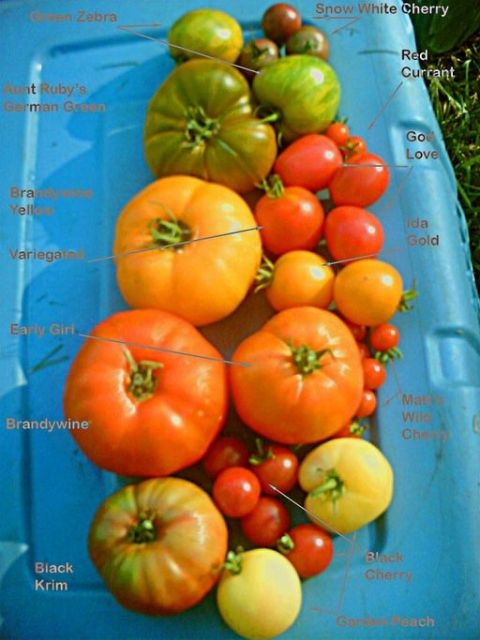
Tomatoes are the most popular plant in backyard gardens. When you grow your own, you get all the flavor that was bred out of commercial varieties. And if you grow heirlooms, you can save the seed for next year. Tomatoes are not the easiest food to grow in the Catskills, but there are tricks to put you on the road to bountiful harvests. But first, let’s settle a question…
Vegetable or fruit?
Although botanically a fruit, tomatoes are classified as a vegetable for culinary purposes. In 1893 there was actually a squabble about the nomenclature that went all the way to the Supreme Court, which decreed tomatoes to be a vegetable for purposes of taxation and commerce. In the future if a science-minded friend corrects you when you call it a vegetable and claims that it’s actually a berry, you can put the issue to rest by citing Nix v. Hedden.
Trials and tribs of an immigrant
There’s a reason it’s such a challenge to grow tomatoes in the Catskills. The wild tomato originated in hot, dry conditions, and can still be found in its native territory of Peru and Ecuador, Chile and Bolivia. Tomato vines just aren’t suited to the cool, moist nights of the Catskill Mountains. Fungal spores, which occur naturally in soil, can easily infect wet leaves, resulting in blight.
7 steps to healthy tomato plants
Fortunately, there are simple steps you can take to ensure a healthy, bountiful crop of America’s favorite crop, even during our short growing season.
1. Give them space
In good soil, tomatoes can grow to be quite large, so allow them plenty of room. If possible, space them 5 feet apart.
2. Use compost
When allowed to decompose in a pile, food scraps and garden refuse turn into a valuable soil amendment that not only nourishes, but also contains a natural fungicide that protects plants from disease. Crushed egg shells in compost provide a continual supply of calcium necessary for proper development of fruit.
3. Spread mulch
Cast a layer of dark-colored mulch beneath plants. This will prevent malevolent spores from splashing up onto the leaves. Darker mulches absorb and reflect heat, which helps tomatoes thrive. Mulch also prevents dry soil, the cause in blossom end rot, which turns the bottoms of tomatoes black.
4. Remove lower leaves
The farther a fungal spore has to float before making contact, the less likely it is to infect your plant.
5. Grow them vertically or upside down
Tomato vines naturally sprawl horizontally, putting their leaves in harm’s way. Tomato cages are the standard solution to the problem, because it forces the plant to stand tall. You can also support them with a trellis, or twine them around minimalist metal spirals. Some gardeners even grow them upside down, planting the tomato in a hole cut in the bottom of a hanging pot.
6. Plant them in a container
Even heirlooms thrive in a container. The leaves can come in contact with decking material without ill effects. Sprawling tomatoes make attractive patio plants. Plus, you can easily bring them inside if the weather is too cold, thus avoiding the crumpled “cat face” effect that often afflicts Catkill-grown tomatoes.
7. Water them in the morning
The leaves dry out in the sunshine, reducing the chance of blight.
Share your know-how
Nothing beats the flavor and nutrition of homegrown vegetables. Do you have a tip for growing great tomatoes? Transition Catskills is putting together an online database of Local Wisdom, which will be a free resource for sharing tips, tricks and techniques for thriving in the Catskills. Visit our site and upload your piece of wisdom today!
www.TransitionCatskills.org/localwisdom
photo: Kazvorpal via Wikipedia commons



